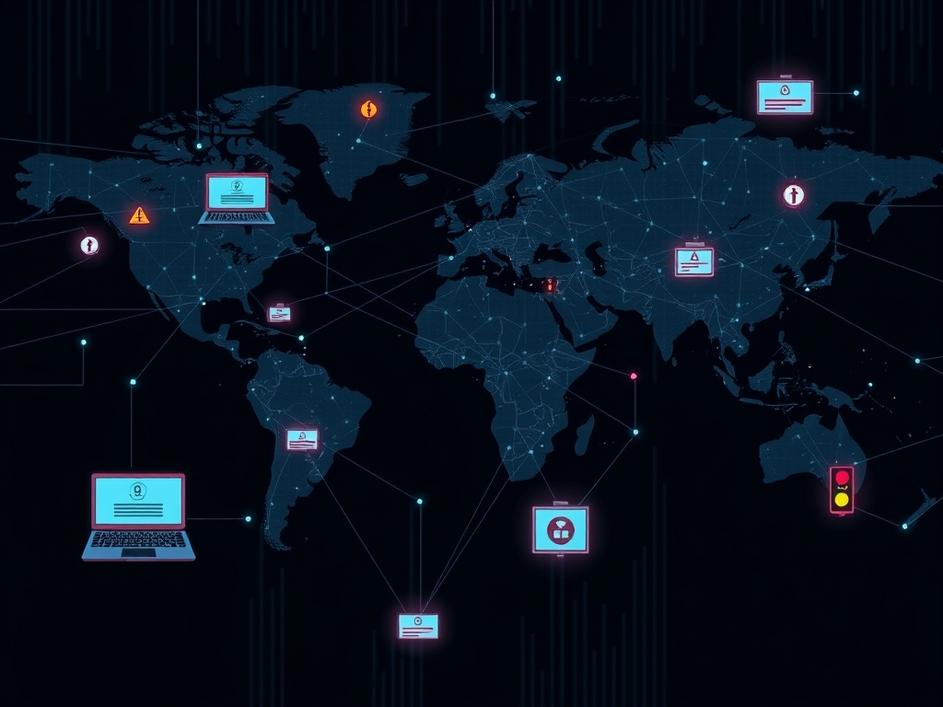


We are a digital agency helping businesses develop immersive, engaging, and user-focused web, app, and software solutions.
2310 Mira Vista Ave
Montrose, CA 91020
2500+ reviews based on client feedback

What's Included?
ToggleImagine showing up to work, logging into your computer, and nothing works. Not just your computer, but the entire network. Applications refuse to launch. Printers are dead. Even logging in feels impossible. This isn’t a scene from a sci-fi movie; it became a very real nightmare for countless businesses and public services recently. A single software update, intended to keep systems safe, instead caused a massive meltdown. Across different industries and even continents, companies found their operations grinding to a halt because one piece of crucial technology, from one specific provider, went sideways. It was a digital ripple effect, turning what should have been a minor update into a global headache. Computers froze, services stopped, and suddenly, the gears of commerce and daily life felt jammed. This incident wasn’t just an inconvenience; it pulled back the curtain on a bigger problem we often overlook.
How did one company’s software update cause such a widespread mess? The answer lies in how we’ve built our modern digital world. In the pursuit of efficiency, cost savings, and specialized expertise, many organizations have chosen to rely on a small number of powerful tech providers for their essential services. Think of it like this: instead of each business building its own power plant, they all plug into the same grid. When that grid has a problem, everyone connected feels the impact. This approach makes sense on paper – these specialist companies offer top-tier solutions that would be too expensive or complex for every business to develop in-house. But it also creates “single points of failure.” When one vital piece of the global tech infrastructure stumbles, the whole interconnected system can falter. We’ve become incredibly good at connecting everything, but perhaps not as good at making sure those connections are resilient when one link breaks.
The effects of an outage like this stretch far beyond just lost business revenue or frustrated IT departments. Our daily lives are deeply woven into this digital fabric. Hospitals rely on these systems for patient records and critical equipment. Airports use them for managing flights and passenger information. Banks depend on them for transactions. Even basic public services, from government offices to emergency dispatch, are increasingly digitized. When these systems go down, it’s not just about a delayed email; it can mean missed appointments, disrupted travel, delayed medical care, or even problems accessing money. The incident showed us that our reliance on a few key tech players isn’t just an abstract corporate risk. It’s a tangible threat to the smooth functioning of society, affecting everyone from the CEO in the boardroom to the person trying to catch a flight or get help at a clinic. We’ve built a world where convenience often trumps contingency planning, and this outage brought that reality home.
So, what can be done to prevent such widespread digital paralysis from happening again? The conversation needs to shift from just fixing problems to building truly resilient systems from the start. This means businesses, and even governments, should think hard about diversifying their technology suppliers. Putting all your eggs in one basket, even if it’s a very good basket, carries obvious risks. It also means investing more in robust backup plans. Are those backups tested regularly? Can operations switch to an alternative if a primary system fails? We also need to explore technologies that allow for more decentralized approaches, perhaps using open-source solutions or regional tech stacks that aren’t all connected to the exact same global platforms. The goal isn’t to abandon cutting-edge tech, but to ensure that our pursuit of innovation doesn’t leave us dangerously exposed to single points of failure. It’s about thinking proactively about how to design systems that can bend, but not break, when the unexpected happens.
This recent crash should serve as a wake-up call for everyone involved in our digital ecosystem. For the tech providers, it underscores the immense responsibility they carry. Their updates and software changes don’t just affect their clients; they can impact entire economies and societies. For the businesses and organizations that consume these services, it’s a reminder to question, to diversify, and to demand higher standards of resilience. Relying on an external vendor doesn’t remove your own responsibility for keeping things running. And for us, as everyday users, it should make us more aware of the invisible infrastructure that underpinning our lives and demand that our governments and service providers take these risks seriously. We’ve collectively built a world that thrives on technology, and now we must collectively work to make that world robust enough to withstand the inevitable glitches and errors that will occur. It’s a complex problem, but it’s one that requires shared attention and proactive solutions from all sides.
From my perspective, this incident highlights a fundamental tension in our digital age: the push for rapid innovation and efficiency versus the need for robust stability and security. We’ve seen incredible advancements because companies can specialize and offer hyper-efficient tools. But this specialization, when taken to an extreme, creates a highly interdependent and fragile system. It’s like building an incredibly fast car, but giving it only one wheel. When that wheel gets a flat, the whole car stops. We can’t just throw out all the advantages of modern tech, but we absolutely need to build in more redundancy and fallback options. It’s about building digital infrastructure that’s not just fast and powerful, but also fault-tolerant. This might mean higher costs, slower adoption of some new technologies, or more complex system designs in the short term. But the long-term cost of these massive, cascading failures—in terms of economic damage, public trust, and even potential safety risks—far outweighs those upfront investments. It’s a matter of responsible engineering for the entire global village.
The recent tech crash was more than just a momentary blip; it was a loud alarm ringing in the digital darkness. It laid bare the unseen threads connecting almost every aspect of our lives to a relatively small number of highly influential technology companies. This isn’t about fear-mongering, but about smart foresight. We’ve become so accustomed to the seamless operation of our digital tools that we often forget their underlying complexity and potential for widespread failure. Moving forward, governments, businesses, and individual users must demand and invest in greater diversity, stronger contingency plans, and more transparent, accountable practices from the tech industry. The goal isn’t to dismantle our digital society, but to fortify it, ensuring that our reliance on technology doesn’t turn into a vulnerability. We need to build a future where a single point of failure doesn’t bring the whole house down, fostering a digital ecosystem that is as resilient as it is innovative. This recent event was a hard lesson, but one we absolutely must learn from.



Leave a reply